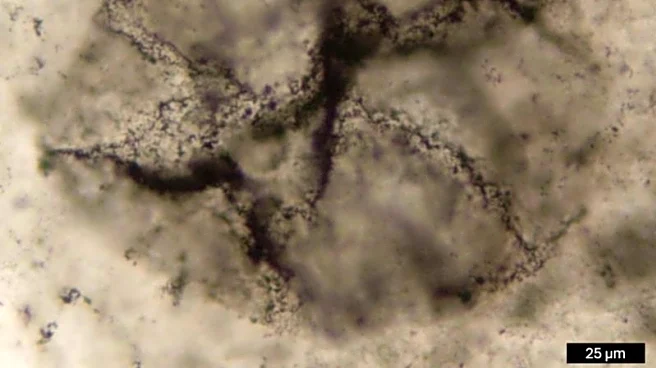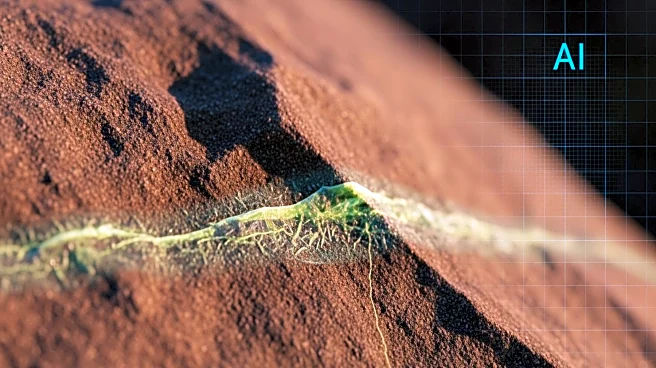What's Happening?
Researchers have discovered the earliest chemical evidence of life on Earth in carbon traces from the Josefsdal Chert in South Africa, dating back 3.33 billion years. Using machine learning, scientists
identified biotic chemistry patterns in these ancient rocks, marking the oldest evidence of photosynthesis. The study involved analyzing samples with pyrolysis-gas chromatography-mass spectrometry, revealing subtle biological signatures. This breakthrough pushes back the timeline for photosynthesis by over 800 million years, offering new insights into early life on Earth.
Why It's Important?
This discovery is crucial for understanding the origins of life on Earth, providing evidence that life existed and spread by 3.33 billion years ago. The ability to detect chemical 'echoes' of ancient life using machine learning represents a significant advancement in paleobiology. It opens new avenues for exploring life's history and evolution, potentially informing the search for life beyond Earth. The findings also challenge existing timelines and theories about early life and photosynthesis, prompting further research into Earth's ancient biological processes.
What's Next?
Future research will likely focus on refining machine learning techniques to detect even older traces of life and exploring other ancient rock formations for similar evidence. Scientists may also investigate the implications of these findings for understanding life's resilience and adaptability over billions of years. The study's methods could be applied to extraterrestrial samples, aiding the search for life on other planets.












